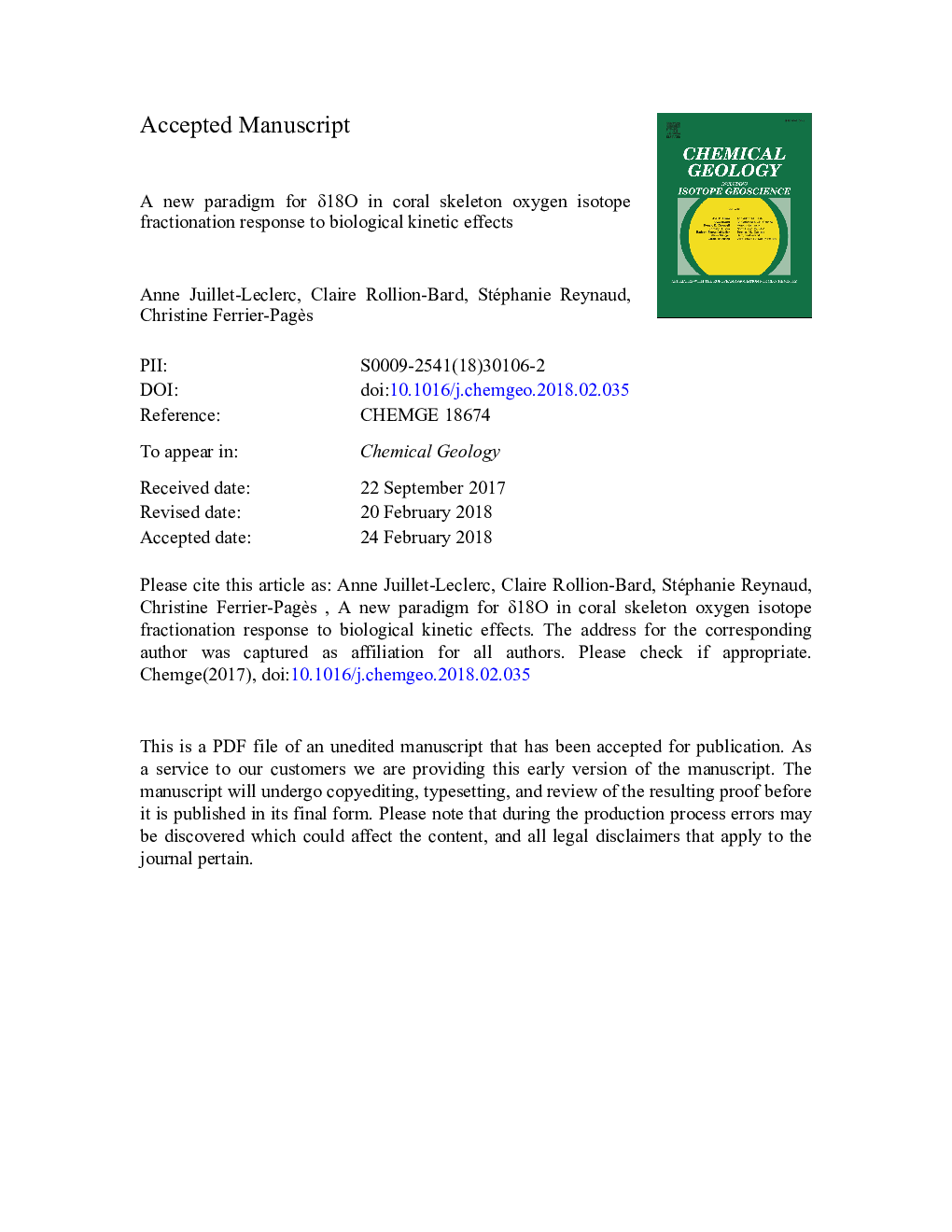| Article ID | Journal | Published Year | Pages | File Type |
|---|---|---|---|---|
| 8910275 | Chemical Geology | 2018 | 42 Pages |
Abstract
This study investigated the relative impact of temperature and light on oxygen isotope fractionation in the aragonite of the symbiotic coral Acropora sp., which was cultured under controlled conditions. Aragonite was randomly sampled, and the oxygen isotopic composition (δ18O) was analyzed at the micrometer scale. Measurements were collected from six cultured colonies using a factorial design of three temperatures (22â¯Â°C, 25â¯Â°C, and 28â¯Â°C) and two light intensities (200 and 400â¯Î¼molâ¯photonâ¯mâ2â¯sâ1). Observation of the newly formed skeletons revealed fibrous morphology. The δ18O distribution following a bin width of 0.25â° in histograms was bimodal. Because the colonies were cultured under constant environmental conditions, we suggest this bimodality in isotope distribution was caused by the diurnal cycle of 12â¯h light and 12â¯h dark that is necessary for coral health and to mimic natural conditions. We assume that the two modal values correspond to the two fractionation end members present in daytime and nighttime fibers. Then, we investigated the precipitation mechanism for each. In contrast to a common assumption, that the two fractionations are due to differences in pH created by more or less efficient Ca2+ pumping, we demonstrate that the pH at the calcification site cannot explain the isotopic discrepancy between daytime and nighttime and conclude that aragonite precipitation does not obey classical thermodynamic rules. We suggest that secretion of proteins by the calicoblastic layer, different following the diurnal cycle, can induce distinct biological kinetic processes. We highlight the interplay of carbonic anhydrase (CA) and organic molecules to accelerate and facilitate the crystallization of coral aragonite only governed by coral metabolism.
Related Topics
Physical Sciences and Engineering
Earth and Planetary Sciences
Geochemistry and Petrology
Authors
Anne Juillet-Leclerc, Claire Rollion-Bard, Stéphanie Reynaud, Christine Ferrier-Pagès,
